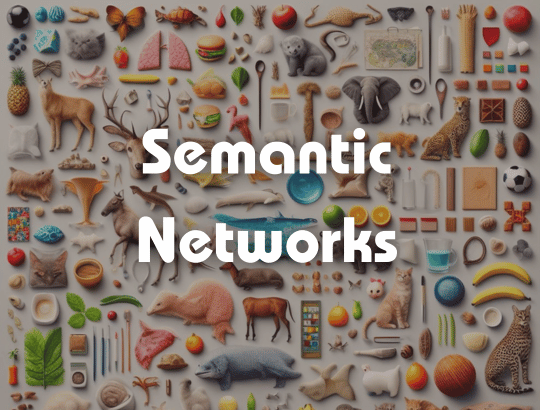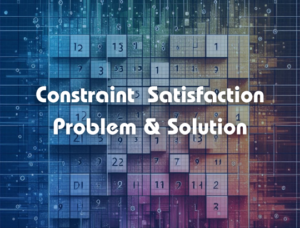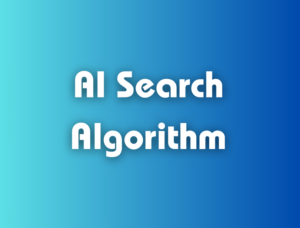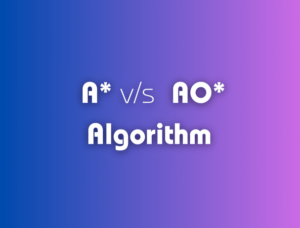Table of Contents
Introduction to Semantic Network
In the world of smart computers and how our brains work, semantic networks are like special maps that help show how things are connected. They’re super useful for computer programs that understand language and solve problems. These networks work a lot like how our brains sort out information, and they’re used in all sorts of cool stuff like talking computers, smart systems, and keeping track of what we know.
What are Semantic Networks?
This network is a graphical structure composed of nodes, representing concepts, entities, or classes, and edges, representing relationships or connections between these entities. These networks help in organizing and representing knowledge in a structured and interconnected manner.
Components of Semantic Network
At their core, semantic networks are graph-like structures where:
- Nodes: Represent concepts, entities, or objects (e.g., “dog,” “car”, “road”).
- Edges: Represent the relationships between these nodes (e.g., “is a”, “has a”, “type of”).

Types of Semantic Networks
There are several types, each with its own structure and purpose. Here are some common types:
- Hierarchical Networks: These networks organize concepts in a hierarchical structure, where broader categories are at the top and more specific concepts are at the bottom. They often resemble trees with parent-child relationships.
- Directed Networks: In these networks, relationships between concepts have a direction. For example, “is a type of” or “is part of” relationships can be represented, and the directionality indicates the nature of the relationship.
- Undirected Networks: Unlike directed networks, relationships in undirected networks have no inherent direction. They typically represent associations or connections between concepts without specifying a specific direction of influence.
- Lattice Networks: Lattice networks represent knowledge as a partially ordered set where every pair of elements has a unique supremum (least upper bound) and infimum (greatest lower bound). They are often used in formal concept analysis and represent a more complex structure than hierarchical networks.
- Frame-Based : Frame-based networks represent knowledge using frames, which are data structures that organize knowledge about a particular concept into a set of attributes and values. Frames can contain slots for various properties and relationships, providing a more detailed representation of concepts.
- Conceptual Graphs: Conceptual graphs are a formalism for knowledge representation that combines aspects of graph theory with logic. They consist of nodes representing concepts and labeled arcs representing relationships between concepts. Conceptual graphs can be used for formal logical reasoning.
- Predicate Networks: Predicate networks represent knowledge using predicates to describe relationships between concepts. Predicates are statements that assert properties or relationships between objects. These networks are often used in formal logic and knowledge representation systems.
- Hybrid Networks: Hybrid networks combine elements from different types of networks to represent knowledge more flexibly or comprehensively. For example, a network might combine hierarchical structure with frame-based representations for individual concepts.
Advantages:
- Structured Representation: Semantic networks provide a structured representation of knowledge, organizing concepts and their relationships in a graphical format. This organization enhances clarity and facilitates efficient retrieval of information.
- Flexibility and Scalability: These networks offer flexibility in accommodating new information and scaling to larger knowledge domains. Nodes and edges can be added, modified, or removed easily, allowing for dynamic updates and expansions.
- Ease of Interpretation: Semantic networks are intuitive and easy to interpret, making them accessible to users without specialized training in AI or knowledge representation. The graphical nature of these networks aids in visualizing complex relationships.
- Inference and Reasoning: Semantic networks enable automated reasoning and inference by traversing through nodes and edges to derive conclusions or make predictions. This capability is crucial for various AI applications, including decision support systems and expert systems.
- Integration with AI Technologies: Semantic networks complement other AI technologies such as natural language processing, machine learning, and knowledge-based systems. They provide a structured foundation for integrating diverse sources of information and extracting meaningful insights.
Limitations:
- Semantic Ambiguity: One of the primary challenges in semantic networks is dealing with semantic ambiguity, where the same concept may have multiple interpretations or meanings. Resolving ambiguity requires additional context or disambiguation techniques, which can be complex and resource-intensive.
- Scalability Issues: While semantic networks offer scalability, managing large-scale networks with numerous nodes and edges can be challenging. As the network grows in size, the complexity of inference and traversal algorithms increases, potentially leading to performance issues.
- Knowledge Acquisition Bottleneck: Building comprehensive semantic networks often involves significant manual effort for knowledge acquisition and ontology engineering. Constructing accurate and up-to-date knowledge bases requires domain expertise and continuous maintenance, posing a bottleneck in system development.
- Difficulty in Handling Uncertainty: Semantic networks struggle to handle uncertainty and probabilistic reasoning effectively. In real-world scenarios, information may be incomplete, uncertain, or contradictory, making it challenging to make reliable inferences solely based on the network structure.
- Semantic Drift and Concept Evolution: Over time, concepts and relationships in a semantic network may evolve or change, leading to semantic drift. Keeping the network aligned with evolving domain knowledge requires continuous monitoring and updates, which can be labor-intensive.
Conclusion:
Despite their limitations, semantic networks remain indispensable tools for representing and reasoning about knowledge in various domains. Advancements in AI techniques, such as probabilistic reasoning, automated knowledge acquisition, and semantic web technologies, continue to address many of the challenges associated with semantic networks, enhancing their utility and applicability in real-world scenarios. As research in AI progresses, semantic networks are expected to evolve further, enabling more sophisticated knowledge-driven applications and systems.
Stay tuned with us for more exciting content about AI and its evolving role in our lives!





